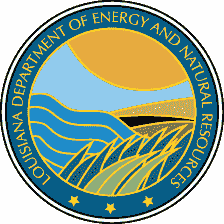Top Stories
Office of Conservation Orders Accelerated Bayou Corne Stability Assessment Schedule
Alternative Method Could Provide Needed Data Before End of April
BATON ROUGE – Louisiana Commissioner of Conservation James Welsh today issued an amended directive to Texas Brine that- if followed promptly by the company- could cut months off the time needed to assess the impact the company’s failed cavern has had on the stability of the west side of the Napoleonville Salt Dome and the surrounding area. Under the amended directive, Texas Brine will be required to use the 3-D seismic survey process to assess the area around the sinkhole and provide the information from that process to the Office of Conservation for analysis by April 21. The information obtained will help agencies on the ground ensure the continued safety of the people in the area and help determine the problems caused by Texas Brine’s failed cavern. The new directive replaces the portion of Conservation’s December 2012 directive requiring the drilling of two 6,000-foot geotechnical wells – one on either side of the failed cavern and sinkhole site. The primary purpose of the original geotechnical well directive was to drill wells that could house imaging equipment so experts could better assess the area and identify the extent of any potential subsurface void spaces, as well as determine the source of the crude oil and natural gas that were released by the cavern failure. The 3-D seismic survey process will achieve the same purpose, but in a quicker amount of time. "The Office of Conservation continues to look at all ways to expedite the response to Texas Brine’s failed cavern so we can ensure the safety of the public now and in the future and return these people’s lives back to normal," Welsh said. "Texas Brine has indicated it can meet this shorter timeline by using 3-D seismic imaging, and we hope this is a sign that the company is finally beginning to respond with the sense of urgency required in responding to this ongoing situation." The 3-D seismic survey method has the potential to provide information regarding stability in the area, void spaces and the possible source of the crude oil and natural gas much quicker than the pair of wells originally ordered because it does not require the drilling process. Welsh said that the Office of Conservation and experts with contracted agent Shaw Environmental and Infrastructure had considered 3-D seismic prior to the December directive ordering the drilling of the two geotechnical wells; however, Texas Brine claimed at the time that the 3-D seismic survey method could take up to two years to produce results, due to concerns about gaining access from private landowners. The two geotechnical wells would have been ready to begin subsurface imaging in August. Welsh said the time estimate originally given by Texas Brine for 3-D seismic spurred the Office of Conservation to seek an alternative method that allowed the needed data to be gathered safely and as efficiently as possible for the community, regardless of costs to the company. The geotechnical well plan ordered in December involved fewer private landowners, greatly reducing concerns about gaining access for the work, and had the shortest implementation time of the options available to the company at that time. In the weeks following the December order, however, Texas Brine radically revised the estimated time needed for a 3-D seismic survey, concluding they could have the work done by April. Welsh said Texas Brine will continue to be held accountable for the other orders contained in the December directive and further directives may be issued as needed if 3-D seismic does not provide the data required in a timely manner. DNR Secretary Stephen Chustz commented that he is hopeful that the technique will provide the information needed to get to the bottom of the situation quickly, though he noted as he had last week that, "If Texas Brine continues to drag its feet, we continue to suggest that they consider buying out the people who want to leave." The amended directive also includes requirements for Texas Brine to: Install a permanent seismic monitoring array in the Oxy-Geismar No. 1 well to detect and locate nearby seismic events, and to monitor current and future stability in the salt dome and the caverns. The data will be made available on the existing public seismic data website. Drill a 1,000-foot well just west of the sinkhole for installation of seismic monitoring equipment and assessment of the makeup of subsurface formations.
